Glastonbury might be known as one of the world’s greenest festivals, thanks to its setting in the picturesque Somerset countryside, but every so often the weather turns foul and those verdant fields are churned up into brown sludge.
As many fans will attest, over the years there have been a number of memorable occasions where guests spent more time trying to pry their wellies out of the mud than they did watching bands perform.
Some take this as a cue to give up and go home, while others decide to lean into it, resulting in some of the more iconic pictures of Glastonbury Festival.
Here are five of the muddiest Glastonbury festivals in memory.
1982 – Slippery in Somerset
Glastonbury tickets in 1982 cost just £8 for the 25,000 people that attended. Although, those lucky enough to secure a ticket were not as lucky in the weather department.
On Friday, the festival saw the highest rainfall recorded in a single day for 45 years. The ground then became swampy and slippery, but in true Glastonbury fashion, that didn’t stop the smiles.
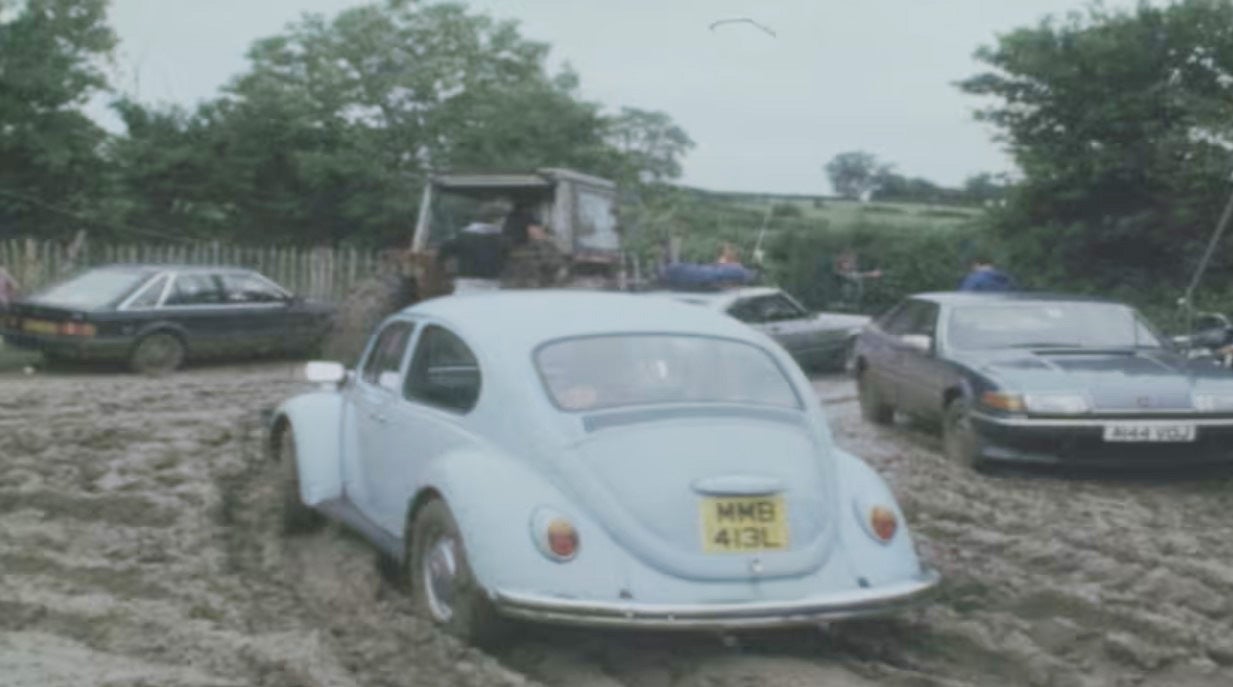
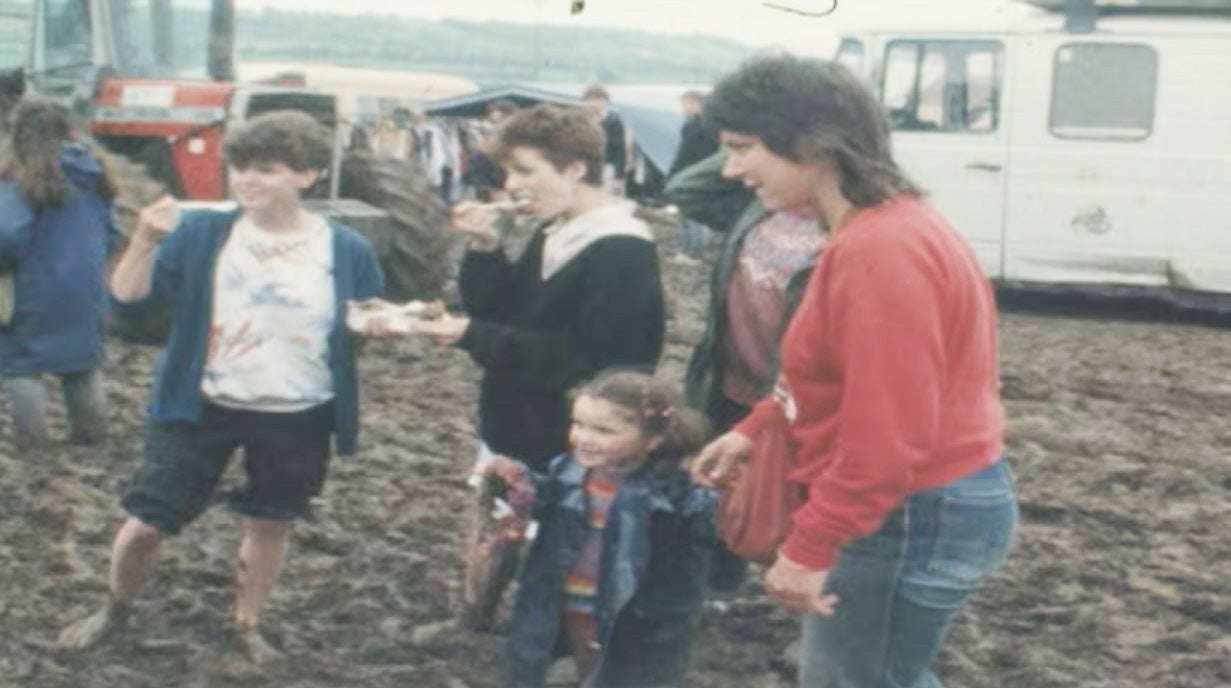
1997 – ‘The year of mud’
After over a decade of relatively dry weekends, 1997 at Glastonbury was dubbed “the year of the mud”.
“The downpour during the preceding days had turned the Arthurian verdure into a swamp of oozing, sucking chocolate mousse,” The Independent reported.
“This was mud as you'd always imagined it: platonic mud, mud you could squeeze into gooey sculptures, mud which made every clod-lifting step a trial of strength. The famous Green Fields certainly weren't green, and they could barely be identified as fields.”
Sir Michael Eavis, the festival organiser and co-organiser, told ITV at the time: “People are really enjoying themselves - and not many people are leaving”.
He added: “It’s a shame about the weather and the mud and things but the spirit is very high”.
Most of the 90,000 attendees that year still managed to enjoy the music, which included sets from The Prodigy, Radiohead and Massive Attack.
However, The Independent also reported that doctors attending the scene believed they had seen more cases of trenchfoot in two days than had been witnessed since the First World War.
“It is basically people whose feet have been wet for 48 hours finding their soles starting to lacerate and blister,” said Dr David Leeder, a volunteer in the festival’s medical centre. “This gets infected and it’s not very pretty. It’s so uncommon we weren’t sure how to treat it.”
One fan, Jim Sommerville from Edinburgh, had to be carried into the medical centre with his injured feet in the air: “The wellies didn’t get here until today and before I only had trainers,” he told The Independent.
“I’ve been dancing in a puddle for about 18 hours but I might have to stop for a bit.”
Meanwhile, other fans said they were giving up entirely: “It was bad enough dealing with just the mud,” said Susan Robinson from Stockport as she navigated her way up a slippery hill towards the exit. “But some bastard stole my wellies from outside my tent last night and I’ve given up the ghost.”
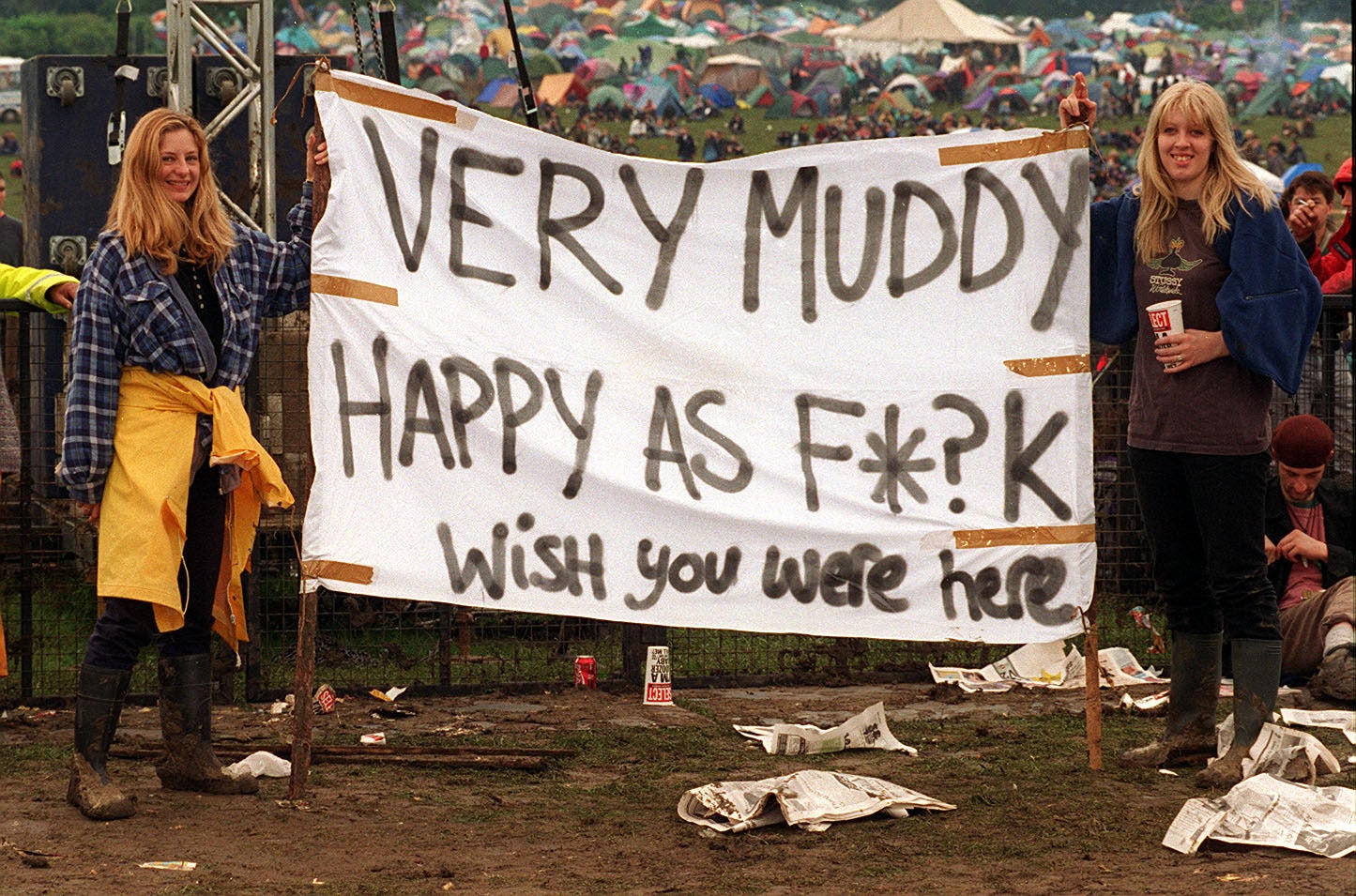
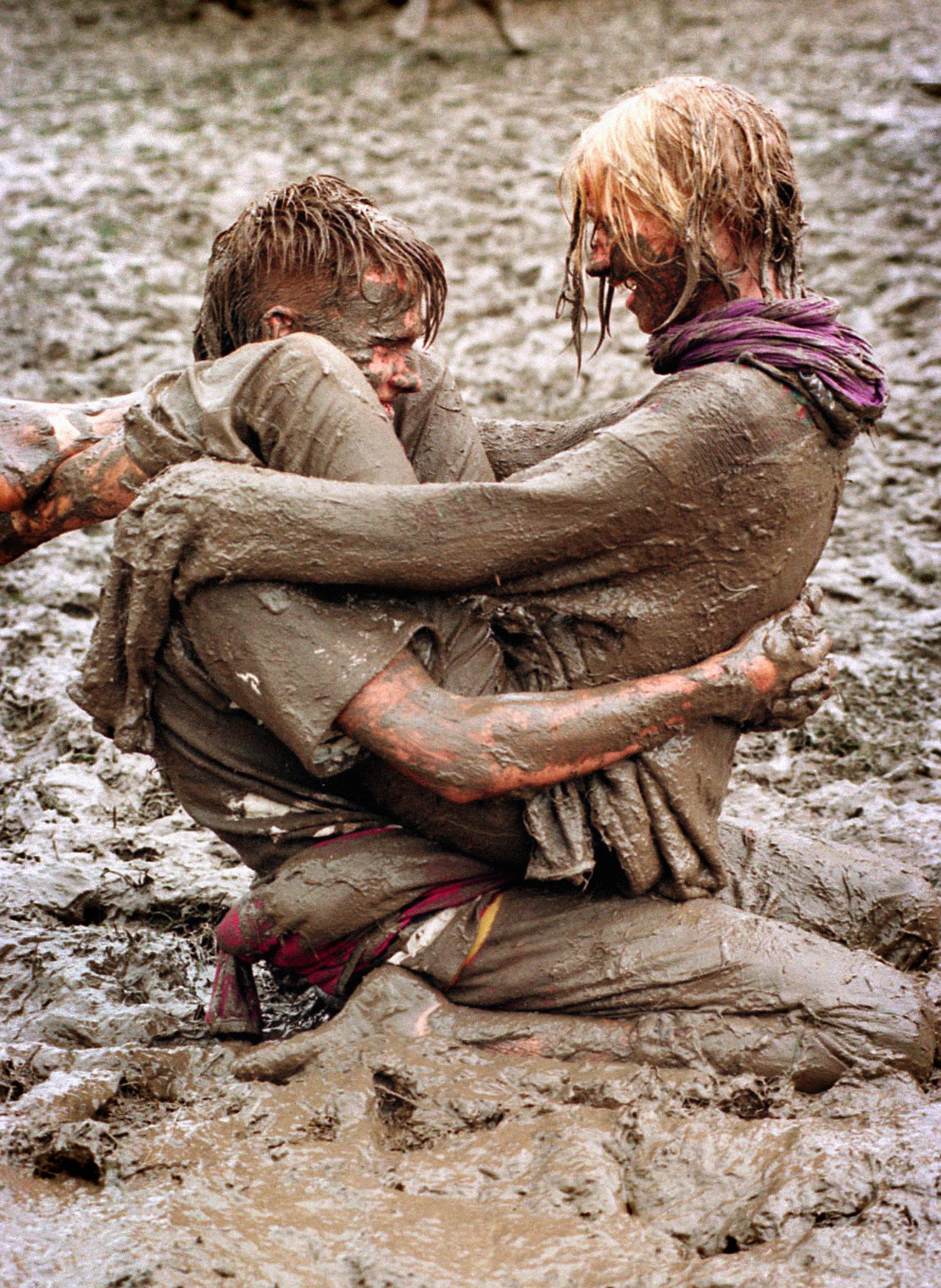
2005 - Lightning strikes
After the “year of the mud”, the 2005 festival turned out to be the year of the flood, as Worthy Farm was hit by two months’ worth of rain in just a few hours. The weather gods even threw in a few lightning strikes for dramatic effect.
This turned the muddy fields into what can only be described as marshland, with festival-goers using inflatable boats and dinghies as their primary mode of transport.
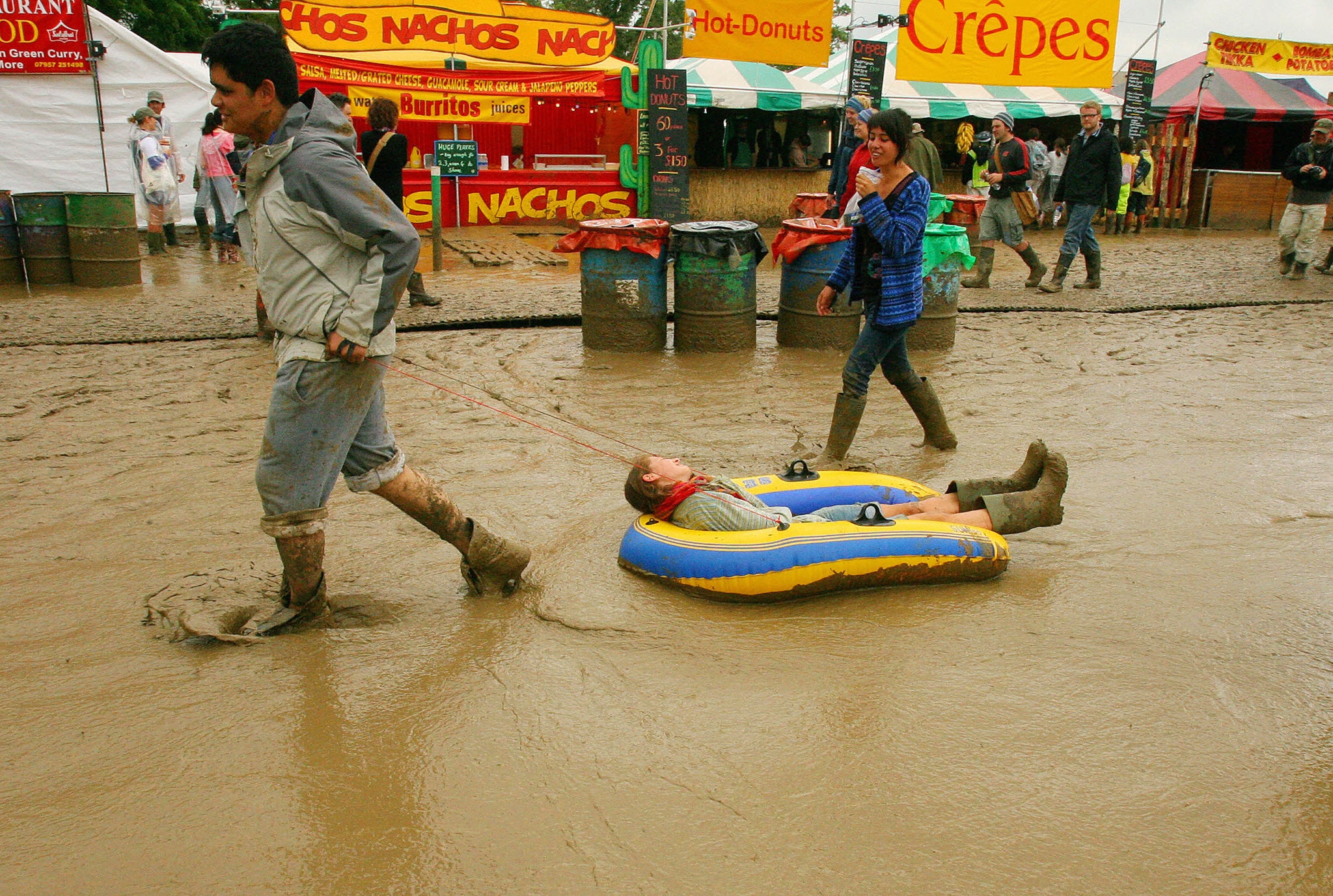

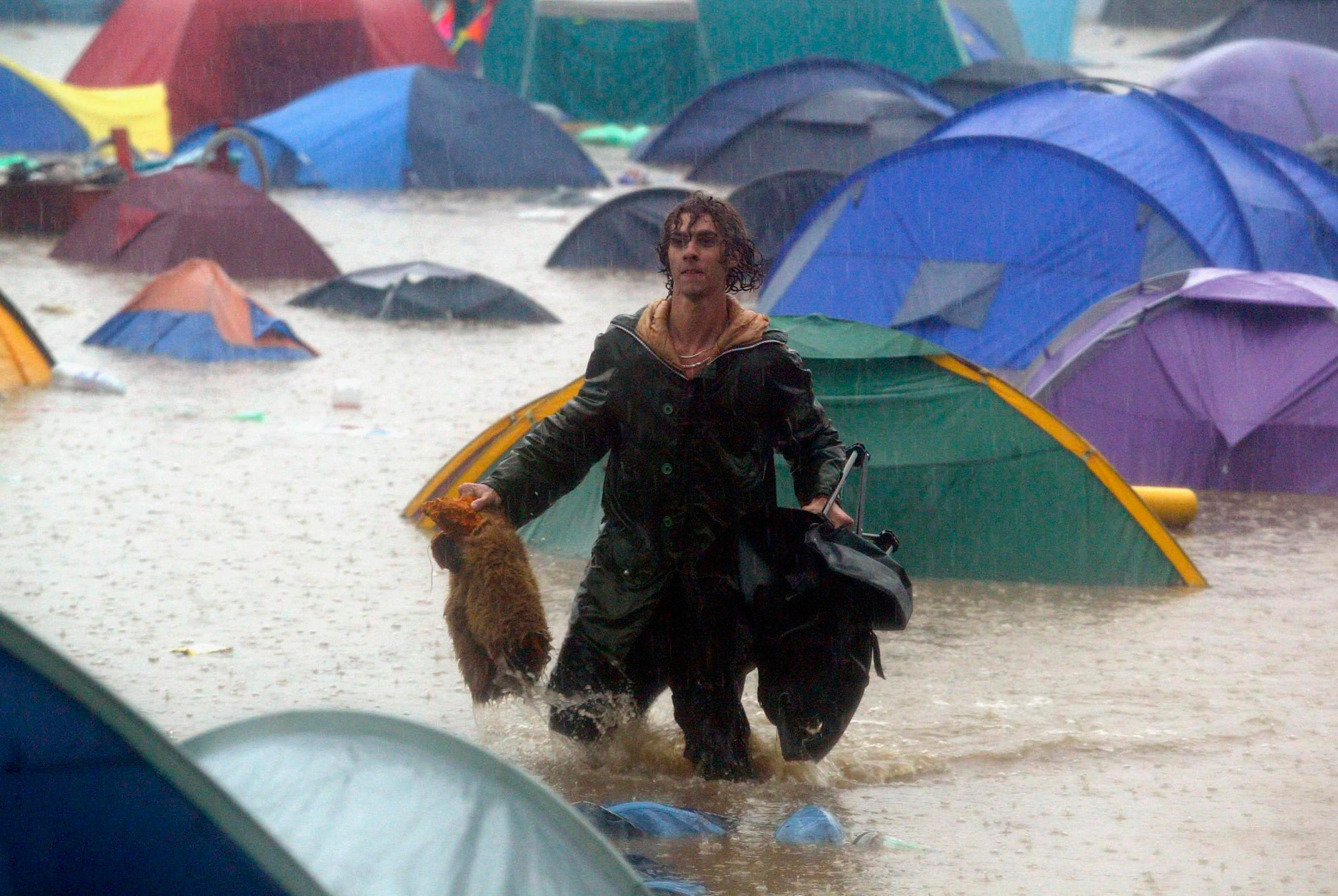
2007 – The wettest Glastonbury ever
Glastonbury 2007 was officially the wettest on record, with 60.1mm of rain falling on the Friday. And it didn’t stop there; the wet weather stuck around for the entire weekend.
The 135,000-person-strong crowd braved the rain and mud to watch headliners the Arctic Monkeys, The Who and The Killers. Once again, Michael Eavis was impressed by how revellers managed to keep their spirits up.
“It’s gone very well, in spite of the rain and in spite of the mud,” he said. “The drains have actually worked, believe it or not. Someone called me from Spain and said they would swap all the sun they had for the Glastonbury culture.”

2016 – Mud wrestling
Nine years later, festival attendees faced some of the worst mud the Somerset farm had ever seen, after torrential rainfall hit the site in the weeks running up to the festival.
Eavis told The Guardian that every single bit of woodchip they could find in the south of England was being used on the site, and even suggested that it was worse than “the year of mud”.
“I’ve never seen mud like it in my whole life. This is worse than 1997,” he said. “In all 46 years, it hasn’t been as bad as this.”
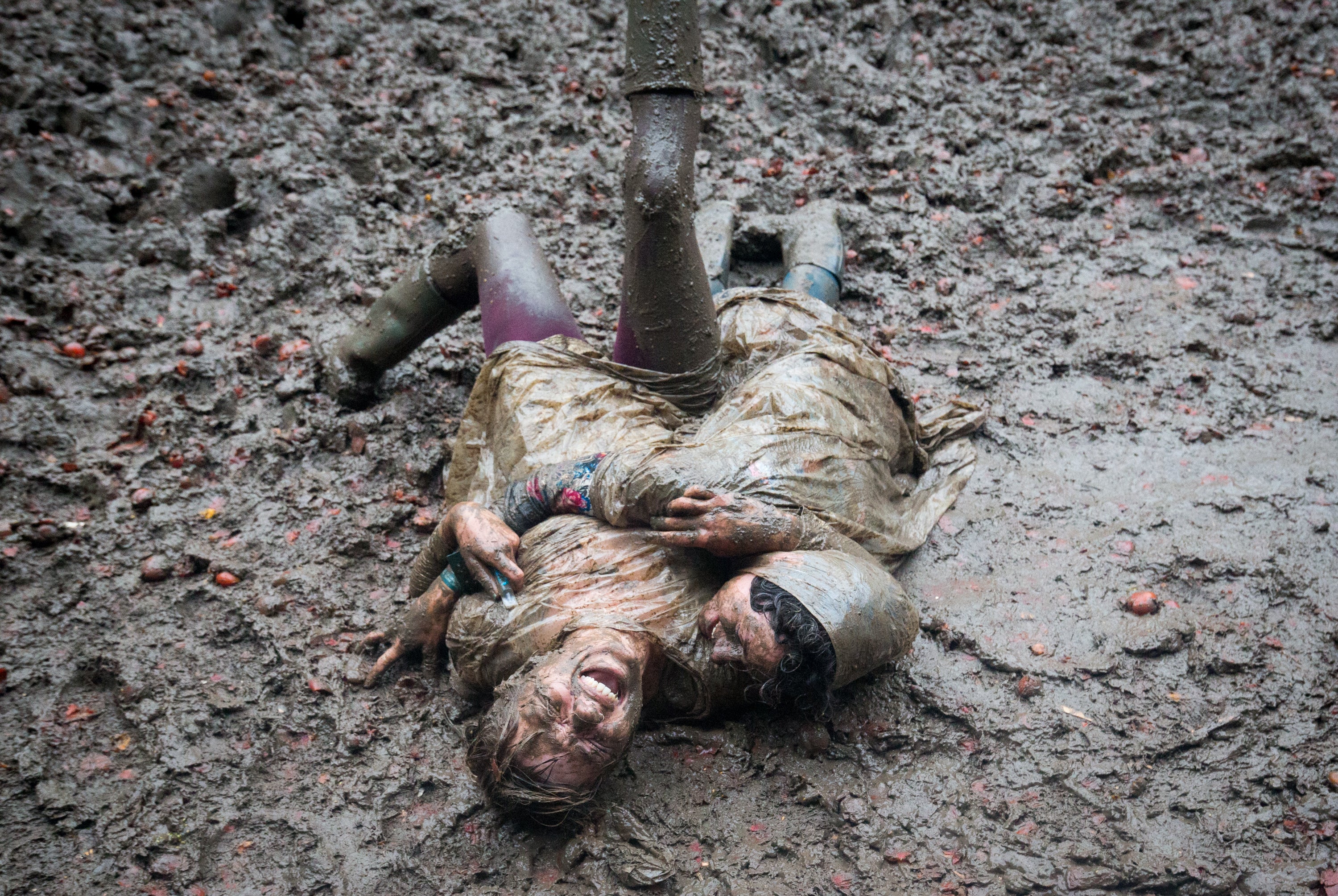
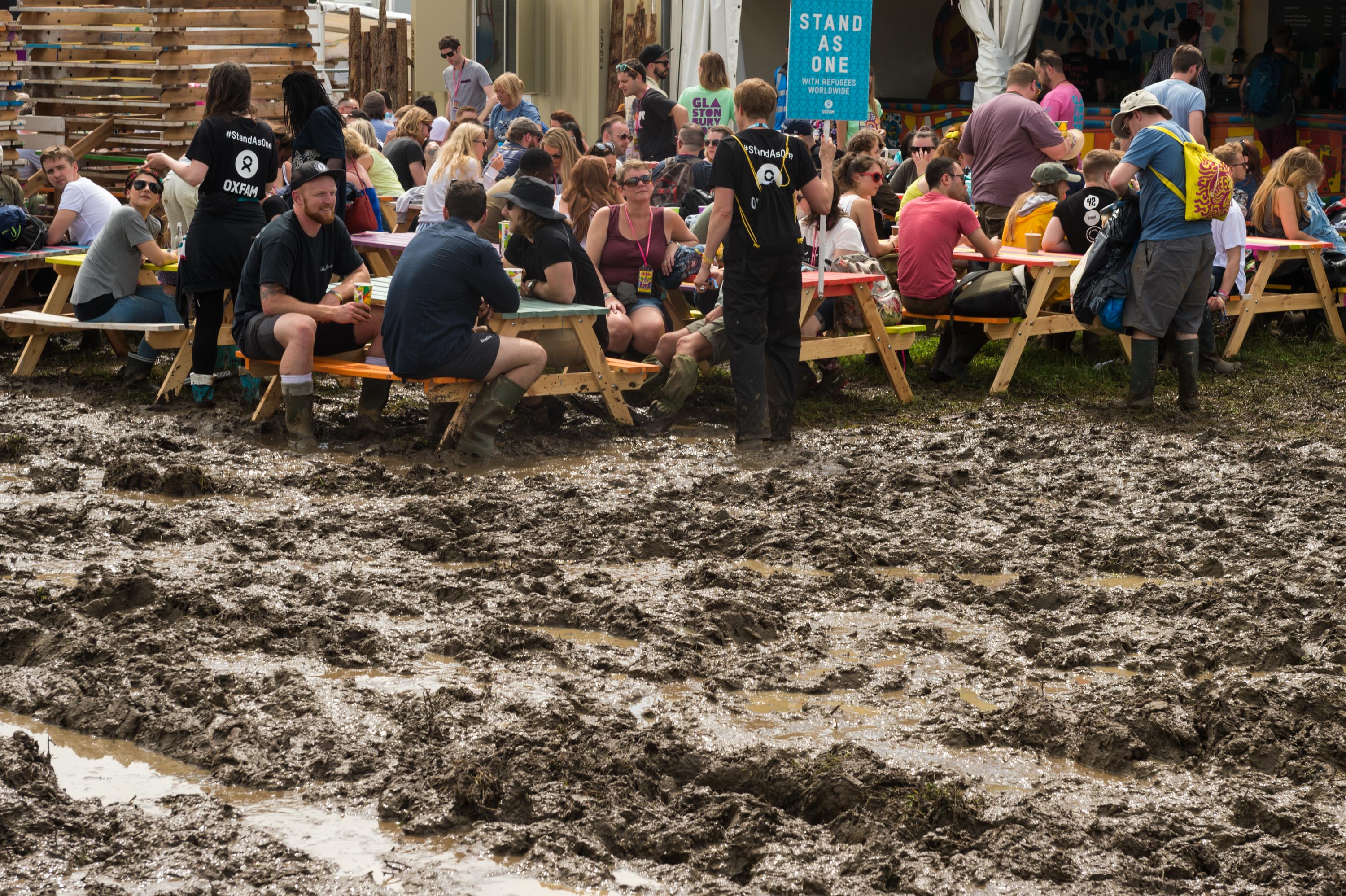
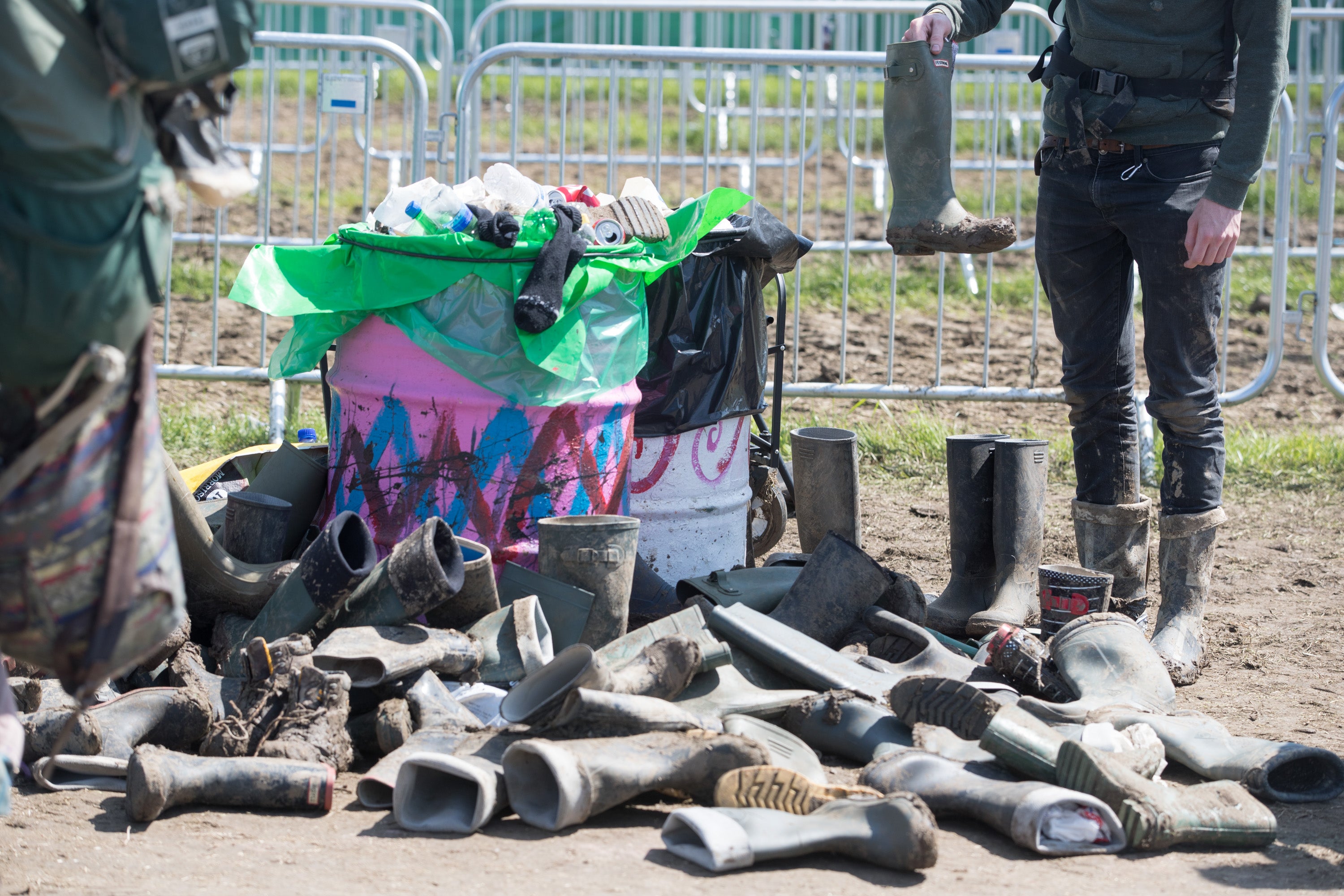
Glastonbury 2024 takes place from Wednesday 26 June to Sunday 30 June. This year’s headliners are Dua Lipa, Coldplay and SZA, while the Legends Slot will be filled by country-pop star Shania Twain.
Fingers crossed that 2024’s festival will bring a “Sky Full of Stars” rather than a “Rainy Day”. You can see the latest Glastonbury weather forecast here.
When is Glastonbury’s fallow year and why does the festival have one?
The uncomfortable truth about pay-to-play Glastonbury
Glastonbury 2025 set times and clashfinder for each stage
Alanis Morissette says she ‘would not be alive’ without therapy
Glastonbury weather: Latest forecast offers hope for festival-goers







